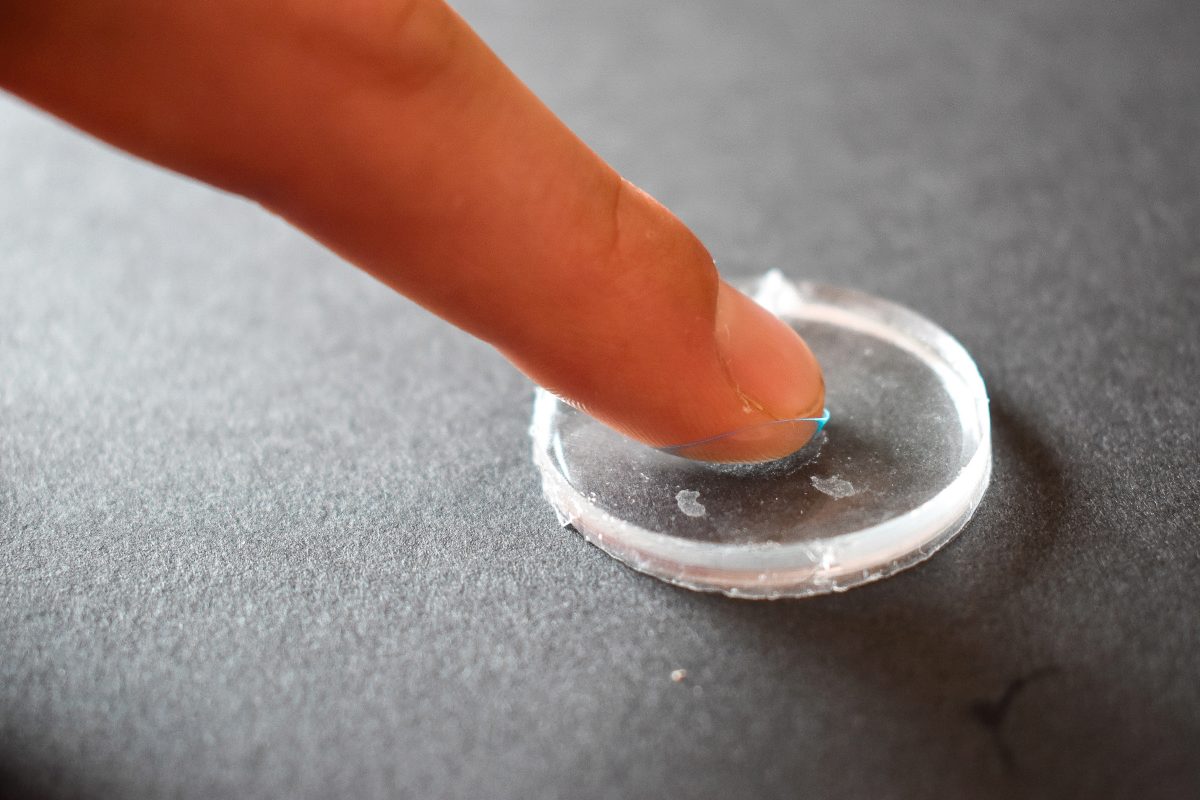
While the common method of rubbing and rinsing to clean contact lenses may be quick and inexpensive, this technique can also damage the lens surface and have variable effectiveness, depending upon the user.
Researchers in Georgia Tech’s School of Chemical and Biomolecular Engineering have demonstrated that a polymer-based cleaning technique is more effective than rubbing and rinsing for removing fine particulate pollutants from soft contact lenses.
The technique they developed is called polymer-on-polymer pollutant removal (PoPPR). It involves pressing the contact lens against the silicone compound polydimethylsiloxane (PDMS) to physically detach contaminants.
This study, “A polymer-based technique to remove pollutants from soft contact lenses,” was conducted by Katherine Burgener (BS-ChBE 2020) and Assistant Professor Saad Bhamla and published in the journal Contact Lens and Anterior Eye.
“This method offers a potentially more efficient cleaning protocol that could enhance the safety, health, and comfort of contact lens users, especially those living in regions with significant air pollution,” explains Burgener.
Common examples of micro- and nano-pollutants are cigarette smoke, pollen, mushroom spores, diesel exhaust, carbon-rich fluffy soot aggregate, and particulates with metallic components.
The study showed that the PoPPR technique was not statistically more effective than rubbing and rinsing for larger particles like pollen. But PoPPR was superior when it came to microplastics and nanoparticles.
Smaller particles (minerals, aerosol pollution) have the potential to embed themselves in the lens, rendering rubbing inadequate and potentially harmful to the lens surface, the researchers note.
While some multi-purpose solutions have been developed as a no-rub cleaning alternative (soaking lenses overnight), these sometimes are not able to remove all physical deposits from the lens surface. Therefore, rubbing can still be required.
The researchers chose polydimethylsiloxane (PDMS) for their cleaning technique because of its extensive use and testing in research and industry as wells its physical properties of straightforward fabrication and transparency.
They tested different stiffness levels of PDMS, finding that it needed to be soft and compliant enough to conform to tiny particles on the lens, but not too weak to tear.
If this technique eventually moves into commercial use after future studies, Bhamla can envision consumers drawing the PDMS from a roll or accessing it as swabs.
While some people throw away disposable lenses daily, others wear types for extended periods of time. Bhamla notes that other researchers are actively developing a future wave of smart lenses with sensors embedded to monitor health conditions (similar to a smart watch for your eye). These would require regular, effective cleaning methods that would not damage the delicate sensors.
Bhamla became interested in contact lenses during his doctoral studies at Stanford University, where his thesis focused on the dynamics of the tear film of the eye in the presence of contact lenses.
“One of the things that struck me was the way that we clean contact lenses is quite uncontrolled and abrasive, rubbing them between our fingertips. I felt we could do better.,” he says.
Lead author Burgener began collaborating with Bhamla in 2017 as an undergraduate researcher in his lab. She will start her doctoral studies in molecular and environmental toxicology at the University of Wisconsin-Madison in fall 2020.
Also pictured below: A finger pressing a contact lens against the PDMS to clean, and images of what the microbeads look like on a contact lens under a fluorescent microscope as well as under non fluorescent lighting.
Brad Dixon, braddixon@gatech.edu